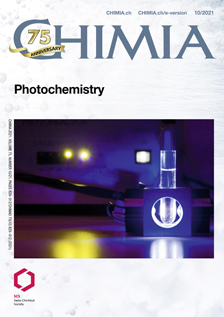Photochemistry of Rhenium(I) Diimine Tricarbonyl Complexes in Biological Applications
DOI:
https://doi.org/10.2533/chimia.2021.837PMID:
34728010Keywords:
Rhenium, Photochemistry, Photocatalysis, Cellular probes, PhotoCORMsAbstract
Luminescent rhenium complexes continue to be the focus of growing scientific interest for catalytic, diagnostic and therapeutic applications, with emphasis on the development of their photophysical and photochemical properties. In this short review, we explore such properties with a focus on the biological applications of the molecules. We discuss the importance of the ligand choice to the contribution and their involvement towards the most significant electronic transitions of the metal species and what strategies are used to exploit the potential of the molecules in medicinal applications. We begin by detailing the photophysics of the molecules; we then describe the three most common photoreactions of rhenium complexes as photosensitizers in H2 production, photocatalysts in CO2 reduction and photochemical ligand substitution. In the last part, we describe their applications as luminescent cellular probes and how the photochemical ligand substitution is utilized in the development of photoactive carbon monoxide releasing molecules as anticancer and antimicrobial agents.
Downloads
Published
Issue
Section
License
Copyright (c) 2021 Fabio Zobi, Kevin Schindler

This work is licensed under a Creative Commons Attribution 4.0 International License.







